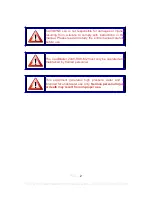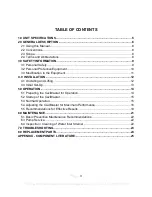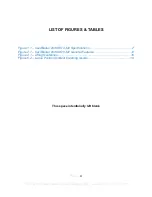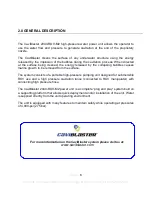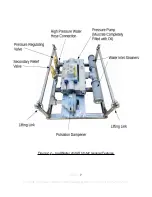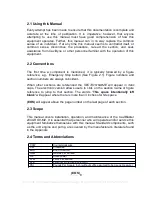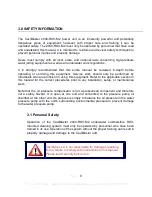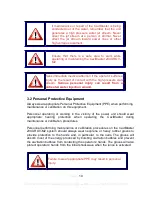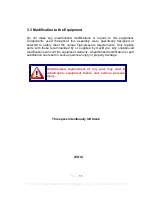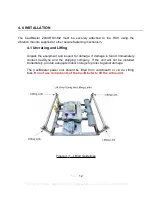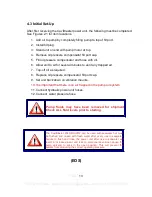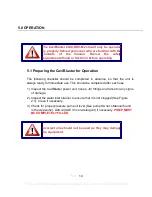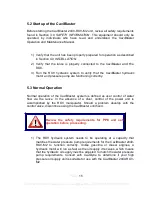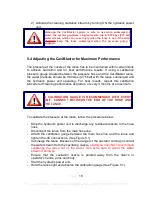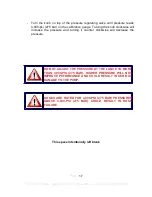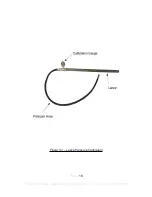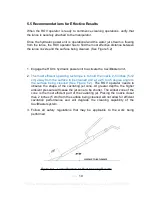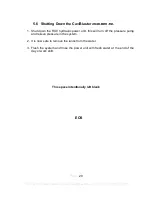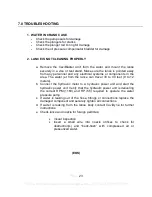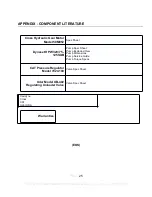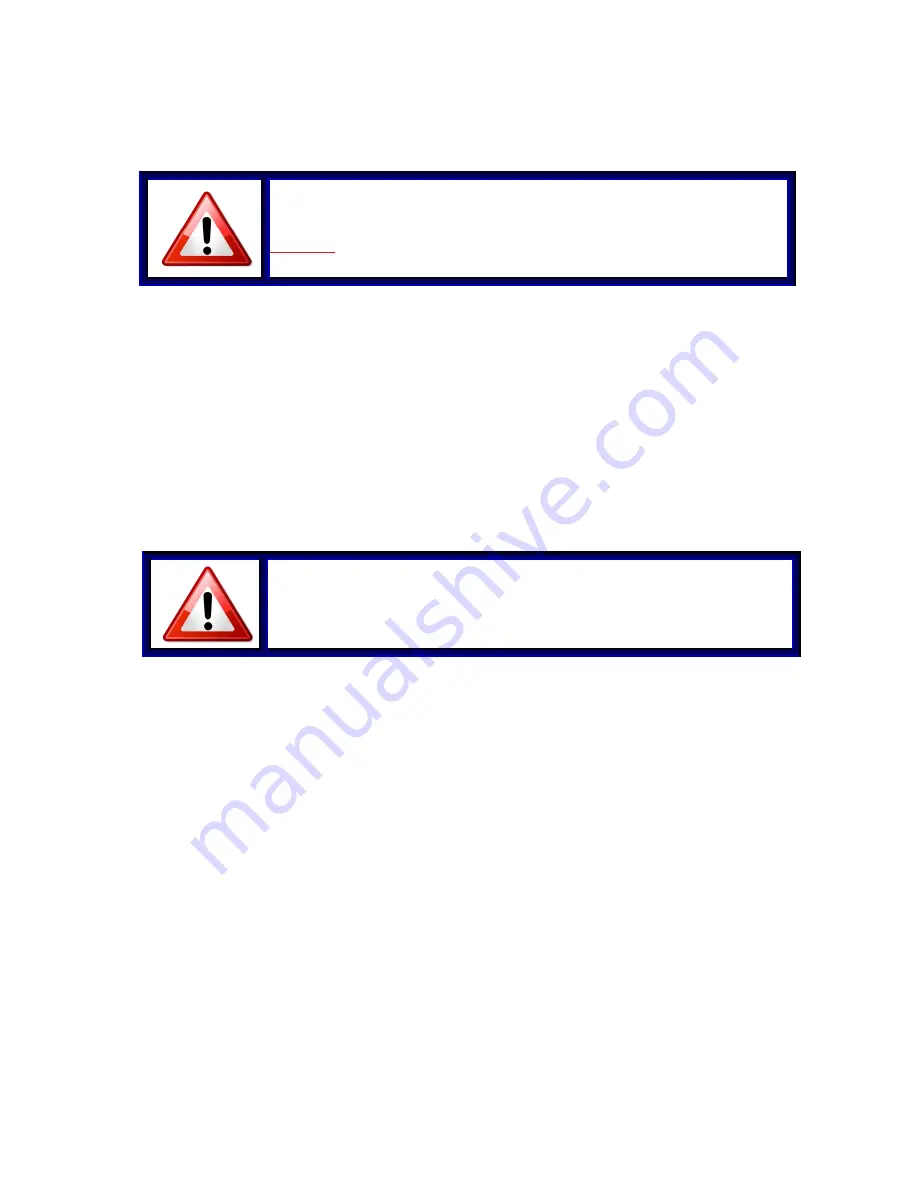
2) Activate the cleaning cavitation stream by turning ON the hydraulic power
unit.
Although the CaviBlaster system is safe to use when submerged in
water, the system generates a high-pressure (up to 4,000-psi [275 bar])
water stream, which can cause injury when the lance is out of the water.
ALWAYS
keep the lance submerged when the pressure pump is
engaged.
5.4 Adjusting the CaviBlaster for Maximum Performance
The pressure at the nozzle of the lance has to be maintained within certain limits
to achieve cavitation and for best performance results. If using a calibration
pressure gauge situated between the pressure hose and the CaviBlaster lance,
the water pressure should be 4,000-psi (275 bar) with the lance submerged and
the hydraulic power unit operating. For best results, repeat this calibration
procedure if cleaning performance degrades, or every 3 months at a maximum.
To calibrate the pressure at the lance, follow the procedure below:
-
Stop the hydraulic power unit to discharge any residual pressure in the hose
lines.
-
Disconnect the lance from the main hose line.
-
Attach the calibration gauge between the main hose line and the lance and
tighten the JIC connections. (See Figure 5.1)
-
Submerge the lance. Because of the danger of the operator coming in contact
the water stream from the cavitating nozzle,
CaviDyne does NOT recommend
calibrating the lance out of the water. Use extra care to avoid the water
stream if doing so.
-
Ensure that the cavitation nozzle is pointed away from the diver’s or
operator’s hands, arms and body.
-
Start the hydraulic power unit.
-
Hold the lance tight and observe the calibration gauge (See Figure 5.1).
Page -
16
For more information please email sales@cavidyne.com or call 1-(352)275-5319
A CALIBRATION GAUGE IS RECOMMENDED WITH EVERY
UNIT. CONNECT BETWEAN THE END OF THE HOSE AND
THE LANCE.

